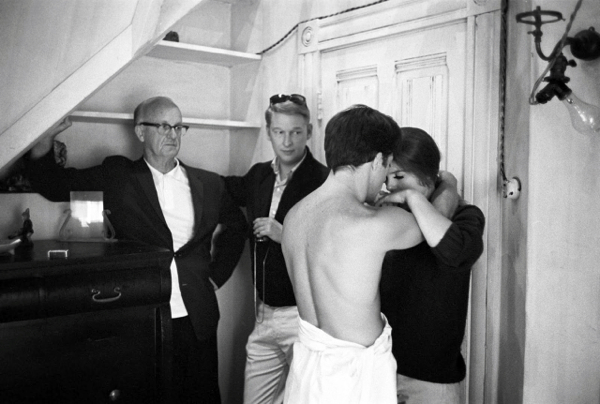Movie review by Greg Carlson
Building his narrative around a pair of onstage conversations between directors and friends Mike Nichols and Jack O’Brien just four months before the death of Nichols in 2014, Douglas McGrath creates an intimate, pleasurable portrait of the early years and first two movies of the emergent filmmaker and future EGOT collector. While several critics, including Guy Lodge in “Variety,” have cited the film’s abbreviated 72-minute length as a liability, McGrath’s sharp focus on the origins of Nichols’ career emphasizes the thrill of emergence and all that comes with sky-is-the-limit possibility. The film is, after all, titled “Becoming Mike Nichols.”
Released almost simultaneously with the Elaine May-directed “American Masters” season premiere profile of Nichols, McGrath’s project eschews interviews with celebrity collaborators to present Nichols in his own words. The successful Nichols-May partnership is explored with an unrushed reverence, and stories of the team’s approach to the high risk/high reward world of improvisational comedy are punctuated by some terrific bits, including the classic “Mother and Son” telephone conversation and “$65 Funeral.” Undoubtedly, an entire feature could be devoted to the pair.
Not unlike episodes of “Inside the Actors Studio,” the star of “Becoming Mike Nichols” shares witty, polished, and educational anecdotes that a certain kind of show business aspirant will commit to memory. To his credit, Nichols confesses some delightful and juicy tales of the on-the-job learning and training required to direct a studio movie. His neophyte ignorance of, for example, lens choices and camera distance to actors is made all the more fascinating by the knowledge that it was Anthony Perkins who brought Nichols up to speed in just three days. Time and again, Nichols reveals that it never hurts to have really good friends. Especially if those friends are more often than not rich, famous, or powerful.
In addition to his quick study of the technological aspects of production, Nichols came to cinema as a champion of performance. Illuminating details of Richard Burton and Elizabeth Taylor on the set of “Who’s Afraid of Virginia Woolf?” are paired with a series of striking production photographs and corresponding clips. The same treatment is given to “The Graduate,” and Nichols singles out Dustin Hoffman’s skill with a suggestion about actors who get better “in the bath” – that is, the printed dailies reveal a kind of magic imperceptible on the set.
Nichols’ doesn’t stray too far from the lights of the stage and screen, although McGrath does squeeze in some personal family history and backstory. First as a fan – a spine-tingling appraisal of seeing Marlon Brando during the original run of “A Streetcar Named Desire” is breathlessly recounted – and then as a creator, Nichols maps his charmed route. The great play-by-play revealing Lillian Hellman’s suggested improvements to “Barefoot in the Park” illustrates the importance of humility and the suppression of ego, skills that Nichols knew how to exercise. A few of the legends (like the tale of the hasty Simon & Garfunkel rewrite that became “Mrs. Robinson”) have been around the block a few times, but Nichols doesn’t seem to mind taking a victory lap and neither will the viewer.
